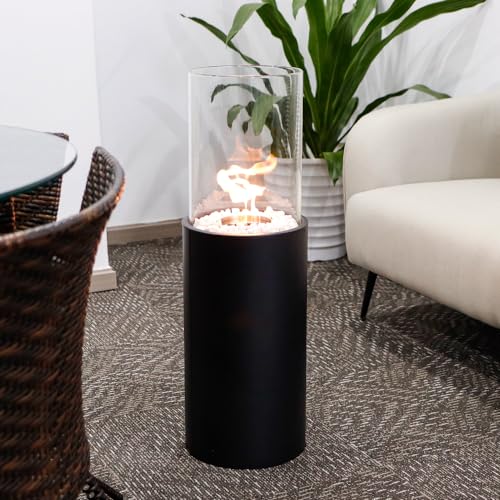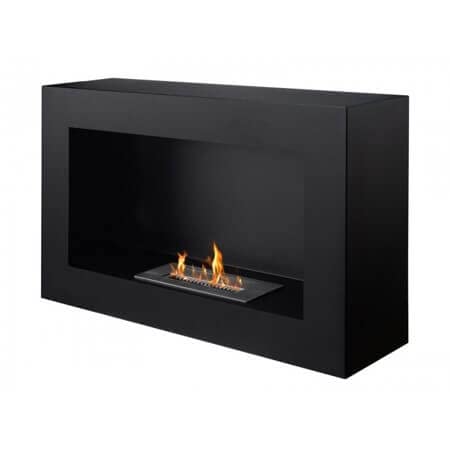You'll Never Guess This Bio Ethanol Fire Free Standing's Benefits
페이지 정보

본문
 Bio Ethanol Fire Free Standing
Bio Ethanol Fire Free StandingA Bio ethanol fire free standing, nutris.net, fireplace that burns clean liquid ethanol fuel. It is easy to use and doesn't emit any fumes or smoke.
Pour the bioethanol in the burner, and then ignite it. To extinguish the flame, simply place the rod that closes it on top of it to starve the oxygen.
Burn time
If you're a sustainably-minded fire-loving person, you may have been held back from bringing a fireplace into your home due to the expense of wood-burning or gas options. However, thanks to advances in technology, there's now another option available: a freestanding ethanol fireplace bioethanol fireplace. This type of fireplace burns fuel made of liquid ethanol which doesn't emit emissions or smoke. It's also safe to use in indoor areas and does not require a chimney or flue. As with any flammable fuel it is crucial to keep an eye on the amount of fuel utilized and be aware when moving the unit.
Bioethanol fireplaces can be found in a variety of styles, and are simple to set up. All you have to do is fill the burner with bioethanol fires freestanding fuel and light it. Then you can enjoy your new fireplace. Many models are portable, which means they can be easily moved from one room to the next. You can place them outside, if you wish. Make sure that your home is well ventilated to prevent the buildup of pollutants and carbon dioxide.
These fireplaces are ideal for those who want traditional style without having to pay for a chimney installation. They don't produce smoke or fumes and are easy to put in. Saving money on heating costs is another benefit. Some even include a false flue to create a more authentic appearance.
There are two types of bioethanol fireplaces, inserts and wall mounted. Inserts are simple burners that have glass shields to guard against the flame's open flame. It can be put in any fireplace to create modern appearance. Inserts are available in a broad variety of sizes and shapes, so you can find one that fits the space perfectly.
A wall-mounted bioethanol fire is an excellent option for those looking to bring a modern look to their home. It's a great substitute for an electric or wood-burning fireplace, and can be installed anywhere in the house. They are also easier to maintain than traditional fireplaces and are able to be easily moved from room to room.
Safety
A free-standing bio ethanol fireplace is safe to use so long as it is placed on a stable, flat surface and is kept clear of curtains and other items that are flammable. They don't emit carbon monoxide and their flames aren't as large, so they pose less of a risk than wood or gas burning stoves. They also don't emit smoke or soot and require only minimal maintenance. But, as with any other type of fireplace or fire it is recommended that they be used in a well-ventilated room and should not be left unattended.
In addition to the standard safety precaution of keeping a flame in sight at all times, ethanol fireplaces should be installed and maintained in a safe manner to prevent accidents and damage. They must be constructed of an extremely durable material and then evaluated by an independent testing company for compliance with industry standards. The user's manual should clearly describe any risks that could be present and give detailed instructions when using the product.
The ethanol fuel that burns in these fires is made from the fermentation of plant byproducts like sugarcane and grain using yeast. Although these products are more eco-friendly than fossil fuels, they are still polluting since they produce trace quantities of carbon dioxide and other gases that can cause irritation to the lungs when inhaled frequently. Additionally, crops grown to produce ethanol are taking land that could be used to grow food.
The ethanol fireplace is more secure than other fireplaces because it doesn't have large fuel tanks and connections that could fail or leak. However, they're not completely safe because the fuel is liquid and could spill out of the tank in the event that the fire is knocked down or if you don't turn off the fire when you leave the room.
If this happens, then the flame will spread to other areas of the room. Be sure to keep an extinguisher nearby to the flame or by not touching it with your fingers. When using a bio-ethanol fireplace it is recommended you open the window just a bit to let fresh air to enter the room.
Ventilation
If you own a bioethanol fireplace the proper ventilation is crucial. Ventilation allows for the removal of combustion byproducts as well as replenishment of fresh air, which maintains a comfortable indoor setting. Additionally, a properly vented fire can prevent carbon monoxide poisoning, as well as other potential health issues. It also improves the efficiency of your heating systems and reduces humidity. It is therefore recommended to follow the manufacturer's instructions on proper ventilation, and make sure your home is well ventilated when using a Bio ethanol fireplace.
The majority of freestanding bioethanol fireplaces bio-ethanol fireplaces are designed like wood fireplaces however, unlike wood stoves they do not require wood to burn. They are powered by a liquid fuel known as bioethanol, which is made from the wastes of specific crops like sugar cane and corn. The fuel is then distilled and purified before being used in fireplaces.
A major benefit of these bio ethanol fireplaces is their versatility, since they don't require a chimney or venting system, and can be moved around the room when needed. This flexibility is particularly useful for small apartments or homes, where space is limited. Bio ethanol fireplaces are also suitable for outdoor use, as long as they are sheltered from rain and wind.
The design of these fireplaces is extremely variable, ranging from a simple circular shape to a more rustic and traditional look. They can be affixed to the wall or positioned onto a table. They come in a variety of colours and materials. Some models can be installed in a wall to create a stylish centerpiece for your living space.
They are available in home improvement stores and specialty fireplace stores and even online retailers. They are generally easy to maintain and can be installed in virtually any room. Ethanol fires are clean and emit no harmful gases, making them an environmentally-friendly alternative to wood or gas fireplaces. However, they may emit some odor when they first start to burn, which will dissipate rapidly.
Although fireplaces are safe, they should always be kept at a fair distance from flammable objects and curtains. Additionally they should not be moved while they're lit, as it can cause burns or other damage to the surrounding. It is also an excellent idea to keep them out of drafty areas, as they can cause smoke.
Installation
Ethanol fireplaces are a great addition to any home and are easily installed. They can be set up anywhere in the room, and do not require gas pipes or chimneys. They burn a liquid fuel called bioethanol, made from renewable resources. They produce less ash and soot than fossil fuels, such as coal or oil. Ethanol-fires aren't able to release volatile organic compounds, which can cause respiratory issues and irritation of the lung.
There are many styles to choose from for bio-ethanol fireplaces including freestanding and wall-mounted models. The installation process can differ based on the style you choose. The majority of fireplaces come with instructions on how to install the fireplace correctly. But, the most important thing is to make sure that you adhere to the instructions of the manufacturer. These guidelines will help ensure that your bio fireplace is safe for use and won't cause damage to the surrounding surfaces.
Most recessed ethanol fires have built-in tanks that hold the liquid ethanol fuel. These tanks must be insulated, and then positioned to non-combustible walls. It is also essential to keep the burner of the ethanol at least one meter away from any combustible materials, including curtains and furniture. The tank should also be kept in an area that is cool and dry and out of reach of pets and children.
Another advantage of an ethanol fireplace is that it's portable, which means you can move it from one place to the next without a complicated installation. This makes it perfect for homes with single-family units and apartments, as well as restaurants and hotels. It is also simple to set up, as there is no requirement for a chimney or electrical connection.
Free-standing ethanol fireplace ethanol fireplaces are a ideal choice for homeowners looking to add a modern flair to their homes. They do not produce toxic gases or smoke They are therefore a good alternative to traditional wood fireplaces. They are easy to clean and operate. The only disadvantage to using a free-standing ethanol fire is that it could be difficult to find bioethanol fuel in your area. You may need to purchase it on the internet or from a specialist retailer.

- 이전글7 Things About Bio Ethanol Free Standing Fire You'll Kick Yourself For Not Knowing 24.11.24
- 다음글출장마사지 Iphone Apps 24.11.24
댓글목록
등록된 댓글이 없습니다.